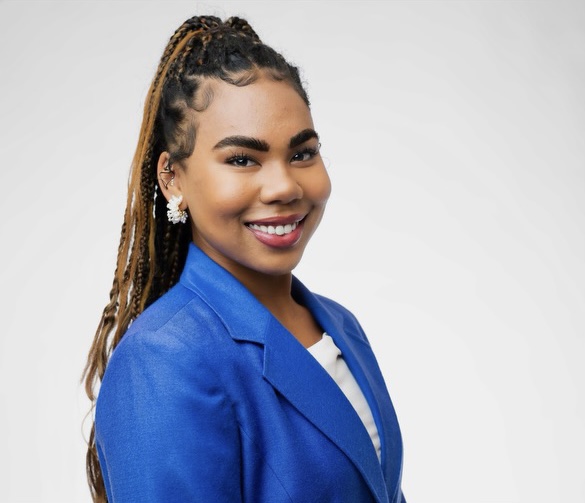Appreciating Bay Area Activists: Tiana Day
Youth Advocates For Change officially moved into their new home in Los Angeles.

When I think back to the year 2020, I have mixed emotions. Between enduring the unknown outcomes of the COVID-19 Pandemic, and watching the rest of the world react to the fault lines of American police brutality and our political climate. I like to remember it as a year of recognizing youth leadership. When Gen Z started rising to the occasion and demanding change, people listened. All it took was passion and strength in numbers from the community.
This is exactly how Tiana Day found her calling.
In the summer of 2020, the San Ramon native took a leap of faith leading thousands of Black Lives Matter protesters on the Golden Gate Bridge in San Francisco California at 17. Four years latest, Tiana Day has established herself as an activist, organizer, international speaker, and founder of Youth Advocates for Change, a 501c3 nonprofit organization that recently relocated to Culver City, Los Angeles. The organization’s priority is to amplify youth voices through intersectional social justice issues and creative arts, as a way to connect and inspire the youth.
After settling into her new space, YR Media sat and talked with her about how the intersectionality of arts and activism functions in her nonprofit.
YR Media: Congratulations on your new office! Why did you choose LA as the new home for YA4C? How’s the Bay to LA transition?
Tiana Day: Thank you so much! The Bay Area feels more communal, like a tribe. I came to LA and I didn’t have that [anymore]. I faced imposter syndrome and a lot of it was me doubting myself. But at the end of the day, my organization works with art and activism and Los Angeles is the art capital of the world. So if you can make an impact [here] you can impact the world.
YR: Why is bridging the gap between art and activism an important way to connect with the youth?
TD: Looking back at my inner child I was so creative, but I think society has forgotten that art is a storytelling mechanism that reaches all people. I learned about black history through film, photos, and my grandparents telling me their stories of being a Black Panther. [Storytelling] is how we continue to educate generations and prep for the future so history doesn’t repeat itself and when I come up with these workshops for the students, I think of little me. I have ADHD and learning is difficult [sometimes]. So I tailored my content to be engaged with, not just the discipline to remember.
YR: So then what concepts are you implementing in these workshops?
TD: We start by going over critical consciousness research. I break it up into three parts; reflection of lived experiences, finding motivation through reflection, and then taking action. It pushes students into their passion, as long as it intersects with art and social justice. The next step is to brainstorm ideas to practice bridging that gap in their own communities, funded by us anywhere from $100 to $1,000 in micro-grants.
A student may be passionate about climate change and film and wants to make a film about how climate change has disproportionately affected black and brown communities or maybe disproportionately affected farmers, which talks about food insecurity and poverty. I really try to preach to students about the intersections of activism that make us think more than just ourselves.
YR: And why is it important that your organization is strictly youth-led?
TD: When things are co-created with the youth, people feel a sense of belonging and ownership over the project. In YA4C everyone is under the age of 25. According to a policy report by the All-State Foundation and the Center for Expanding Leadership Opportunities, which I co-authored, we’re redefining youth as ages 5 to 25. So I start with middle schoolers to build their confidence, then high schoolers, and college students, supporting them through [their] transition. And the cool thing is it’s like a big sister/big brother model. We’re not going to tell mom kind of thing because just a bunch of kids who are passionate about making a change in the world and we flow [well] as we create because we care.
YR: How do you handle generational conflict, especially when older generations may not take youth activism as seriously as they should?
TD: There’s a happy medium between working with older and younger generations, everyone is a teacher and a student. [Older generations] just want to make sure that you don’t make the same mistakes that they do. But we live in a different time and that’s when discernment comes in so you have to be able to [listen] to your intuition [and think] is this person just yapping so much to control my actions or is it said out of love?
This story was produced by YR Media and is part of a collaborative project “Our Future” that includes content from young journalists from Boyle Heights Beat, Coachella Unincorporated, The Contra Cosa Pulse, The kNOw, Tower of Youth, Voices of Monterey Bay, and YR Media.
Sydney Wanguhu, (she/her) is from The Bay Area and is an L.A.-based journalist who covers entertainment and culture. Follow her on Instagram & Spotify: @sydneyy._.
Edited by Nykeya Woods